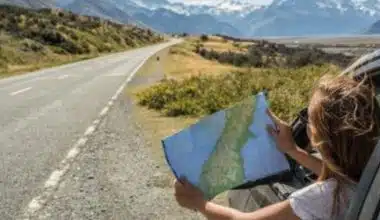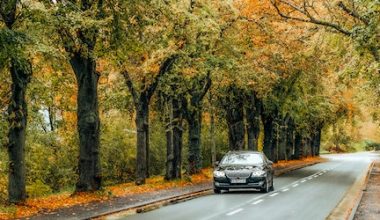An exciting task that offers adventure, freedom, and the chance to see new locations and have new experiences is planning a road trip. Planning a successful road trip involves lots of processes that need to be taken one step at a time. This research makes it important for one to have a lot of understanding of how to best plan a road trip, regardless of where you are in the US. You will also know how to use navigation tools like Google Maps and the like.
How To Plan A Road Trip
Planning a road trip can be an exciting endeavor, and using planning tools and apps can help you with your itinerary. Start planning your road trip as early as possible. Planning a road trip allows you to discover interesting locations and make lifelong memories while taking note of important destinations of interest. Choose your destination, research stops, plan overnight accommodations, explore alternative routes, plan rest stops, and be mindful of time.
Here are some general steps to help you plan a successful road trip:
#1. Research your Destination
Learn about the attractions, landmarks, and activities available at your destination. Look for recommendations online, read travel guides, and check out travel forums to gather information and ideas.
#2. Calculate Driving Time
Determine the total driving time from your starting point to your destination. Consider factors such as distance, speed limits, and estimated stops along the way. This will help you plan how many days you’ll need for the trip.
#3. Determine the Best Time to go
Take into account the climate, the crowds, and any noteworthy events taking place where you’re going. Pick a time that fits your tastes and enables you to take maximum use of your road trip.
#4. Choose your Route
Once you have a destination in mind, plan your route. Consider scenic routes, interesting landmarks, and any specific stops you want to make along the way. Use online mapping tools like Google Maps or GPS devices to help you plan the most efficient route.
#5. Set a Budget
Determine how much you’re willing to spend on your road trip. Consider expenses such as gas, accommodations, food, activities, and any other miscellaneous costs. This will help you plan accordingly and avoid overspending.
#6. Research Accommodations
Look for suitable accommodations along your route. Consider factors such as budget, location, amenities, and reviews. Book accommodations in advance, especially during peak travel seasons, to ensure availability.
#7. Prepare your Vehicle
Be sure the vehicle is in good shape before you start driving. Verify the fluid levels, brakes, tires, and any other items that require repair. Prepare a first aid kit, a spare tire, and jumper cables for your roadside emergency kit.
#7. Plan for Meals
Research restaurants, grocery stores, and other dining options along your route. Consider packing snacks and drinks for the road to save time and money.
#8. Plan for Emergencies
Prepare for unexpected situations by having a backup plan. Research hospitals, auto repair shops, and emergency services along your route. Carry a map or have a navigation system in case of GPS signal loss.
#9. Pack Wisely
Make a packing list to ensure you have all the essentials for your trip. Include clothing, toiletries, medications, electronics, chargers, maps, and any other items you may need. Pack efficiently to maximize space and minimize clutter.
Let someone know about your road trip plans, including your itinerary, driving routes, and estimated arrival times. This ensures someone is aware of your whereabouts in case of emergencies.
How To Plan A Road Trip With Google Maps
Planning a road trip with Google Maps is a convenient and efficient way to ensure you have a well-organized and navigable adventure. Google Maps offers a wide range of features and tools to help you create an itinerary, find points of interest, and navigate your journey with ease. It provides real-time traffic updates, estimated travel times, and turn-by-turn directions during your road trip. Remember to keep your phone charged and have a car charger available to ensure you have access to Google Maps throughout your journey. Make sure to have a stable internet connection or download offline maps for areas with limited connectivity.
Steps to Follow While Planning a Road Trip
To plan a road trip with Google Maps, follow these steps:
#1. Create a Route Between Destinations
Open Google Maps and click on the Directions button. Enter your starting point and destination. Google Maps will generate a driving route for you.
#2. Customize Your Route
If you want to add specific stops or waypoints along the way, click on the three-dotted menu icon next to your starting point or destination and select Add Stop. You can add multiple stops to create a more personalized route.
#3. Optimize Your Route
If you have multiple stops and want to find the most efficient order to visit them, click on the three-dotted menu icon and select Add Destination. Drag and drop the destinations in the order you prefer, and Google Maps will optimize the route accordingly.
#4. Explore Places of Interest
Use the search bar on Google Maps to find attractions, restaurants, hotels, or other points of interest along your route. Click on the specific location to view more details and add it as a stop on your road trip.
#5. Save Your Route
Once you’ve finalized your route, you can save it for future reference. Click on the three-dotted menu icon and select Save route. You can give it a name and access it later in the Your Places section of Google Maps.
If you’re planning a road trip with others, you can share your route with them. Click on the Share button and choose the preferred method of sharing, such as sending a link or sharing via messaging apps.
#7. Access Your Route on Mobile
To access your planned road trip route on your mobile device, make sure you’re signed in to the same Google account. Open the Google Maps app, go to Your Places, and select the saved route. It will be available for navigation.
#8. Check Traffic Conditions
Before starting your road trip, it’s a good idea to check the traffic conditions along your route. Google Maps provides real-time traffic information, so you can avoid heavy traffic or road closures. Simply open the app or website and view the traffic layer to see current conditions.
#9. Estimate Travel Time
Google Maps provides estimated travel times based on current traffic conditions. Keep in mind that these are just estimates and may vary depending on various factors such as traffic, weather, and road conditions. Plan your stops and breaks accordingly to stay on track.
#10. Use Street View
The Google Maps Street View feature allows you to virtually explore your route before you even start your road trip. You can get a visual sense of the surroundings, landmarks, and road conditions along your route. Simply drag the yellow Street View Pegman onto the map to access this feature.
How To Plan A Road Trip With Stops
Making the most of your trip by organizing a road trip with stops will allow you to discover intriguing locations and make lifelong memories. Planning a road trip with stops allows you to enjoy the journey, discover new places, and make the most of your travel experience. Make sure to have a balance between planned activities and spontaneous exploration to truly embrace the adventure. There are various steps you can take to guarantee a smooth and pleasurable road trip when planning one with stops.
Here’s a breakdown of how to plan a road trip with stops:
#1. Choose Your Destination
Decide on your final destination or the general route you want to take. Consider factors such as distance, attraction, and personal preferences.
#2. Research Stops
Look for interesting and must-visit places along your route. Consider national parks, landmarks, scenic viewpoints, historical sites, museums, local attractions, and cultural experiences. Use online resources, travel guides, or road trip planning apps to gather information.
#4. Plan Overnight Accommodations
Identify suitable accommodations for each night of your trip. This could include hotels, motels, campgrounds, or vacation rentals. Make reservations in advance to ensure availability, especially during peak travel seasons.
#5. Consider Alternative Routes
Explore alternative routes that may offer different scenery or attractions. This can add variety and excitement to your road trip. Keep in mind any time constraints or preferences when evaluating different routes.
#6. Factor in Rest Stops
Plan for regular rest stops to stretch your legs, use restroom facilities, and refuel. Research rest areas, service stations, or scenic spots along your route where you can take breaks.
#7. Food and Dining
Research dining options near your planned stops. Look for local restaurants, cafes, or food stops that offer regional specialties or unique dining experiences. Consider packing snacks and drinks for the journey to save time and money.
#8. Consider Driving Preferences
When organizing your stops, consider your driving preferences. If you enjoy taking scenic drives, look for routes that provide stunning coastline or countryside vistas. Plan to stop at historical places or landmarks if you have an interest in history. Plan your itinerary such that it reflects your interests.
#9. Capture Memories
Bring a camera or use your smartphone to capture memorable moments along the way. Take photos or videos of the scenic views, attractions, and unique experiences you encounter during your road trip. These will serve as lasting memories of your adventure.
#10. Be Mindful of Time
Keep an eye on the clock to ensure you have enough time to reach your planned stops and accommodations. Leave some buffer time for unexpected delays or to explore additional attractions that catch your interest along the way.
How To Plan A Road Trip Across The Us
The enormous landscapes, varied cultures, and undiscovered wonders of the United States can all be explored by organizing a road trip throughout the country. Planning a road trip across the US can be an exciting and rewarding adventure. From choosing your route to packing essentials and organizing accommodations, creating a well-thought-out plan is key to ensuring a smooth and enjoyable journey
Steps Involved in Planning A Road Trip Across The US
#1. Determine the Duration
Decide how long you want your road trip to be. Consider the number of days or weeks you have available and how much time you want to spend driving each day.
#2. Identify a Route
Research and choose a route that aligns with your interests and preferences. There are several iconic road trip routes in the US, such as Route 66, the Pacific Coast Highway, and the Great River Road. Consider the scenery, attractions, and cities you want to visit along the way.
#3. Research Road Conditions and Construction
Look into any ongoing road construction or major road closures along your planned route. This will help you anticipate delays and choose alternative routes if needed.
#4. Check Travel Restrictions and Requirements
Before embarking on your road trip, check for any travel restrictions, entry requirements, or guidelines that may be in place. This includes researching state-specific regulations and any necessary permits or passes for national parks or other attractions.
#5. Check Vehicle Condition
Ensure your vehicle is in good condition for a long road trip. Check the tire pressure, oil levels, brakes, and other vital components. Consider getting a thorough inspection and servicing before hitting the road.
#6. Create a schedule
Make a basic schedule of the towns and places you wish to visit, together with the number of days you intend to stay in each place. Be adaptable and make room for impromptu detours or extra stops that may interest you along the way.
#7. Plan Activities and Side Trips
Consider activities or side trips that fit your interests in addition to the main sights. Such as hiking trails, beautiful drives, historical places, museums, and outdoor activities like kayaking and zip-lining. Take advantage of the chance to travel off the usual route.
#8. Plan Accommodations
Look for hotels, motels, campgrounds, or other accommodations along your route. Book in advance if possible, especially during peak travel seasons, to ensure availability.
#9. Pack Road Trip Essentials
Pack road trip essentials such as a first aid kit, roadside emergency kit, flashlight, extra batteries, water bottles, snacks, and a cooler for perishable items. Don’t forget to bring a camera to capture memorable moments!
#10. Stay Safe on the Road
Observe traffic laws, drive defensively, and avoid distractions while driving. Take regular breaks to prevent fatigue, switch drivers if possible, and monitor weather conditions. Be prepared for emergencies by having a roadside assistance contact and familiarizing yourself with local emergency services.
What is the Easiest Way to Plan A Road Trip?
The easiest way to plan a road trip is to use an online trip planner or mapping tool like Google Maps. Open the tool, enter your starting location and destination, click Directions, and select Car as the travel mode. Add stops, adjust the order, and Google Maps will calculate the best route. Save your itinerary as a Custom map for future reference.
How do I Create A Road Trip Itinerary?
To create a road trip itinerary, first determine your starting location and main destination, then use an online trip planner to create a basic route. Add stops of interest, and research activities, and allocate a budget for each day. Reserve accommodations in advance for each night, create a packing list and print or save your itinerary. Double-check the weather forecast, especially in high-elevation areas, and ensure your vehicle is in good working condition. Share your plans with someone else and ensure your vehicle is in good working condition before departing.
How Much Money Do I Need for A Road Trip?
The estimated budget for a road trip can vary, but a common range is $1000 to $2000 for a multi-week trip, averaging around $60 to $100 per day. This includes expenses such as fuel, food, accommodations, attractions, and emergency costs. Planning, budgeting for unplanned expenses, and finding discounts can help reduce costs. A budget of $1000 to $1500 is recommended for a multi-week road trip.
What is the Best Way to Route A Road Trip?
The best way to route a road trip is to use tools like Google Maps, Roadtrippers, or Rand McNally Trip Maker. These tools allow you to input your starting location, destination, and any stops or attractions you want to visit along the way. They will then calculate the most efficient and convenient route for your road trip, taking into account factors like distance, travel time, and potential traffic. You can also customize your route based on preferences such as scenic drives or avoiding toll roads. These tools provide a visual map and turn-by-turn directions to guide you throughout your trip.
What are the First 3 Steps to Planning A Road Trip?
The first 3 steps to planning a road trip are, first decide on your destination and route, then plan your budget for fuel, food, accommodations, activities, and emergency expenses. Finally Prepare your vehicle for the trip by checking fluids, and tires, and packing essential supplies.
How Many Hours Should A Road Trip Be?
Road trips should be limited to 6-9 hours per day or 400-500 miles to avoid fatigue. Factors affecting driving time include individual tolerance, number of drivers, breaks, traffic, and road conditions. Planning 6-8 hours or 400-500 miles per day, taking breaks, and scheduling driving shifts for multiple drivers can maximize driving time and safety.
Conclusion
Planning a road trip across the United States is an exciting and rewarding adventure. To plan, determine the duration, choose a route, research road conditions and construction, check travel restrictions and requirements, and ensure your vehicle is in good condition. Create a basic schedule of towns and places to visit, be adaptable, and plan activities and side trips. Stay safe on the road by following traffic laws, driving defensively, taking regular breaks, switching drivers, monitoring weather conditions, and having a roadside assistance contact. Remember to bring a camera to capture memorable moments.
- HOW TO PLAN A TRIP: Detailed Guide
- The Ultimate Guide: How to Plan the Best Scenic Road Trip
- Best Scenic Road Trips for Families: A Guide to Memorable Journeys
- Top 10 Road Trips for Solo Explorers: Embrace the Journey
- PLANNING A TRIP: The Ultimate Guide






